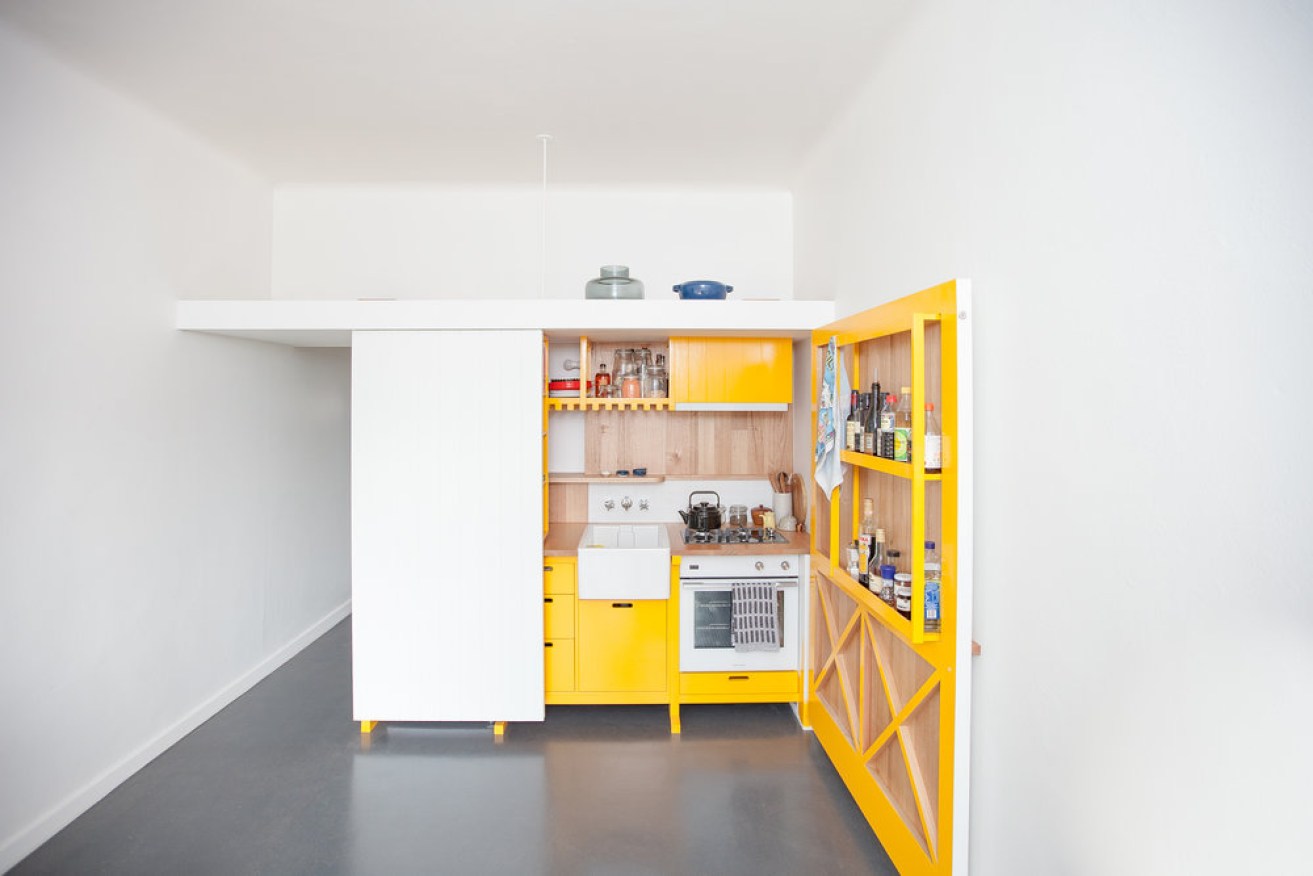The Melbourne apartment that does a lot more with less


Architect Nicholas Agius used a fold-out kitchen bench-top to maximise space in his 23-square-metre Fitzroy apartment. Photo: Rubin Utama
Students and young professionals across the world are embracing micro-apartments as an answer to spiralling rents and gridlocked highways.
Sometimes comprising little more 10 square metres, these units are typically located in city centres and amenity-rich suburbs. They use fold-out furniture and clever floor plans to make them feel bigger than they are. And they encourage residents to think of their neighbourhoods as extensions of their homes.
Developers often describe them as a solution to Australia’s affordable housing crisis; others, as a race to the bottom on living standards.
But Melbourne architect Nicholas Agius thinks the truth is a little more complicated.
“Small-footprint living is pretty popular now, which is a good thing. But I don’t think making things smaller is going to save the day … and I think it suits particular personalities and people who are at a particular phase in their life,” he told The New Daily.
Inspired by the works of modernist architects Wells Coates and Best Overend, Mr Agius maximised the use of space in his apartment by tinkering with the layout and building a fold-out kitchen workbench that contains pretty much everything you would expect in a regular kitchen.
Mr Agius used the kitchen workbench to divide the studio into distinct living and sleeping spaces, which he said made it possible for someone to sleep in, while someone else got ready for work or read the paper.
Over the course of six months, he moved the bed behind the workspace – “like a bed on a boat” – and tucked a washing machine in a cupboard underneath it.
“I sort of created a log on all the ways I did things. And then it was a process of, ‘can I change this behaviour, therefore I don’t need this’, and then that led to an architectural response,” Mr Agius said.

Mr Agius said creating a separate living space made the flat feel bigger. Photo: Tom Ross
“The bedroom doesn’t need to be huge, and the bed doesn’t need to be stuck in a middle of the room, with all this wasted space, which is effectively just room for you to get into one side of the bed or the other.”
Elsewhere, Mr Agius made do with a smaller fridge so that he could fit it in under the kitchen benchtop, forwent unnecessary appliances such as toasters to create more food preparation space, and converted the bathroom into something closer to a dressing room.
“I was trying to dissolve the idea that you need a robe with doors on it if you want to store clothes,” he said, adding that the glass wall he added doubled as a shower screen.
“That allowed me to have half of that space as a dressing room, which was effectively a shelf and a hanging rail.”
Mr Agius hopes his renovation will encourage others to reconsider how much space they need to live comfortably.
But he also concedes that micro-apartments will only work if they’re built in well-serviced neighbourhoods.
“No matter how clever those apartments are,” he said, “if they’re not linked to universities or parts of the city that are going to stimulate people, then they may not be successful.”

Melbourne architect Nicholas Agius used a fold-out kitchen workbench to divide the studio into separate living and bedrooms. Photo: Nicholas Agius








